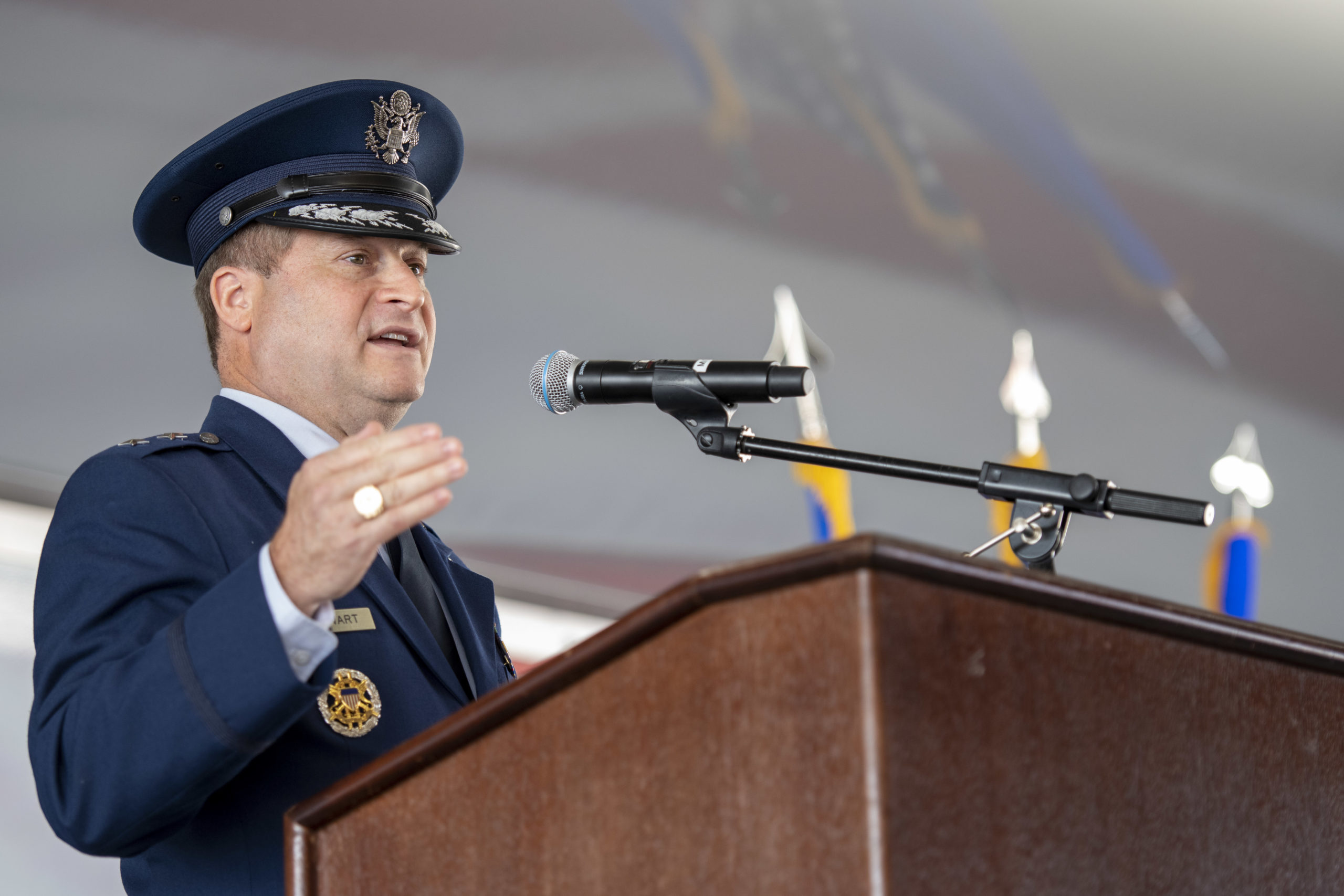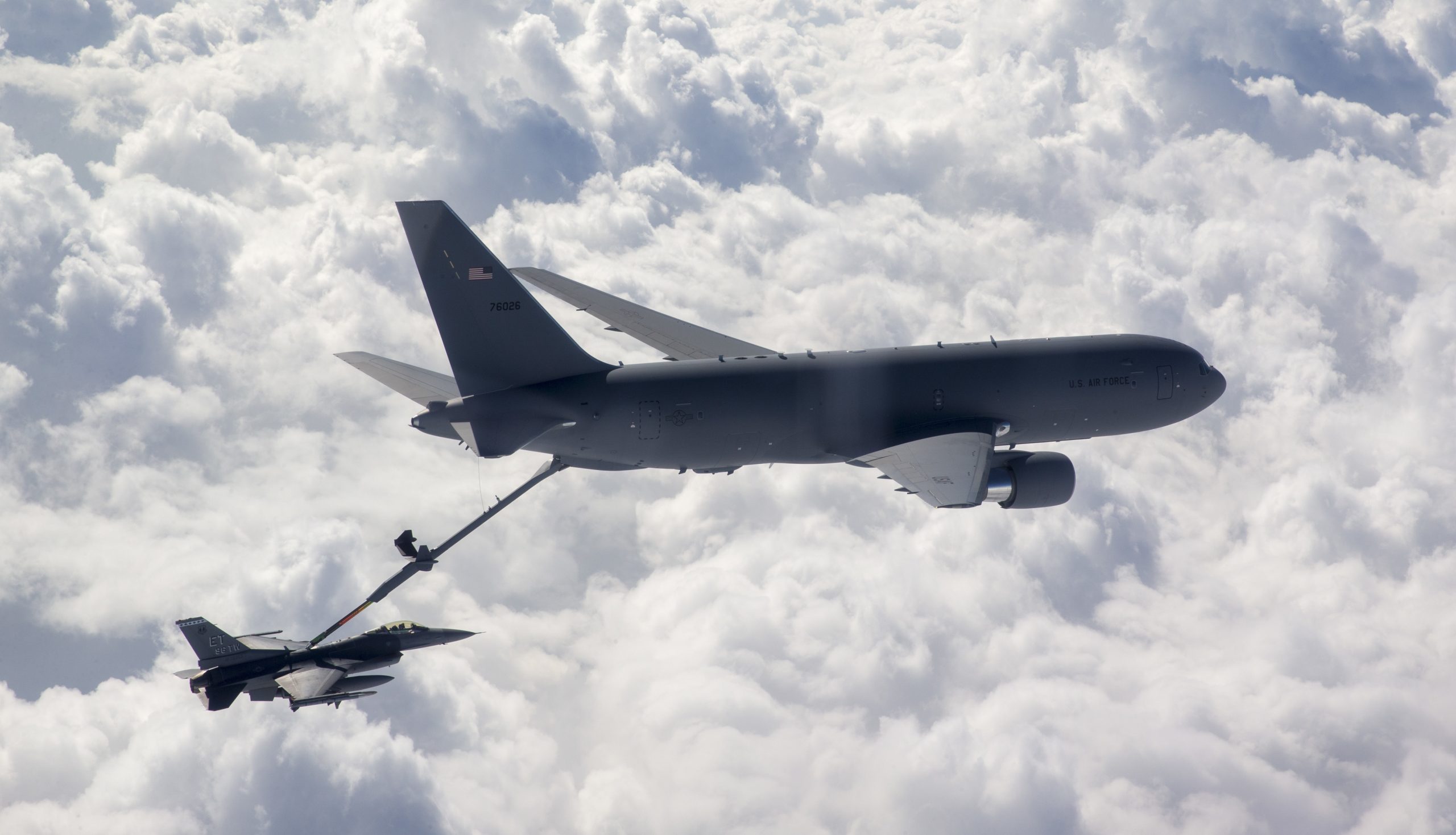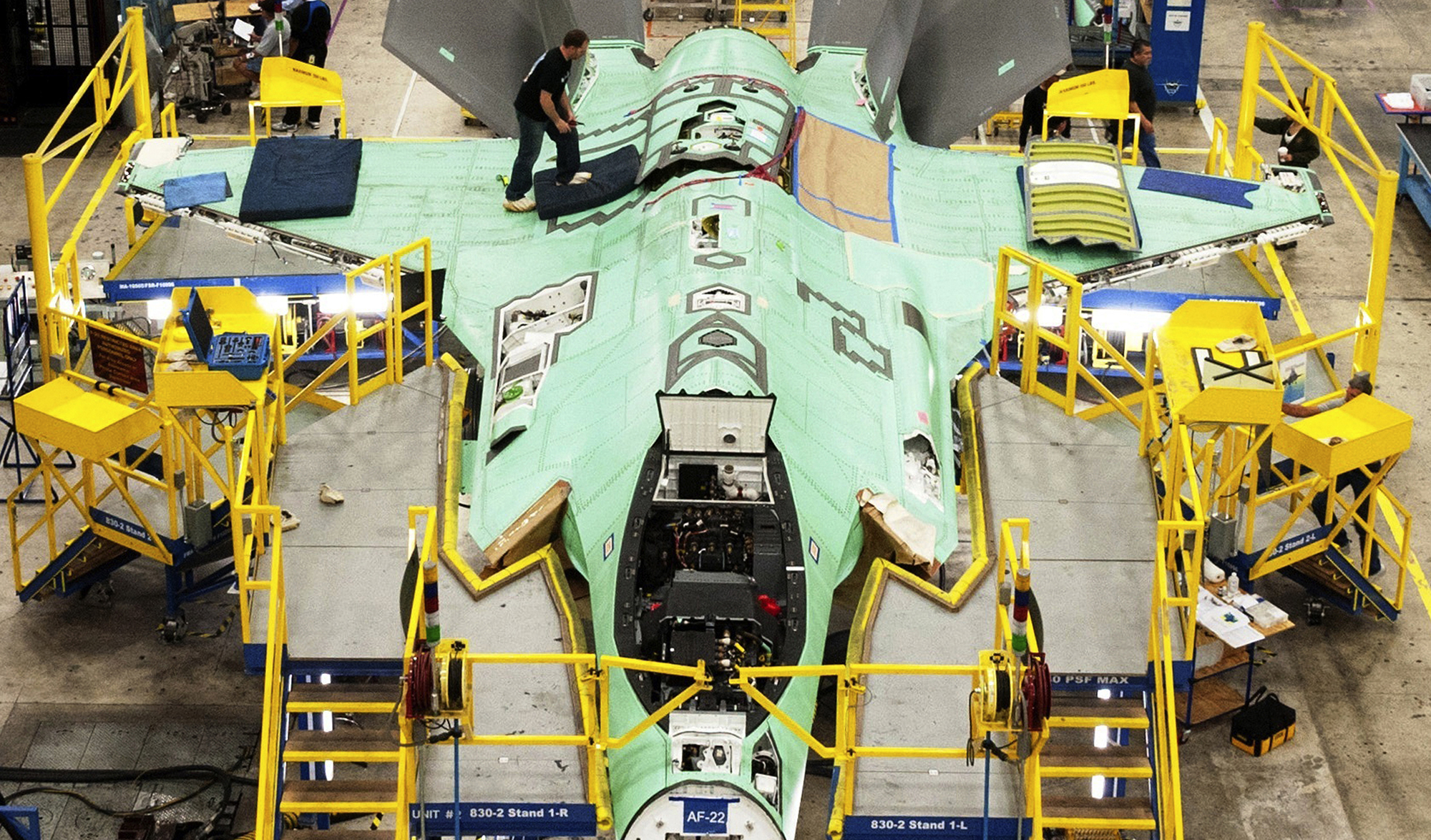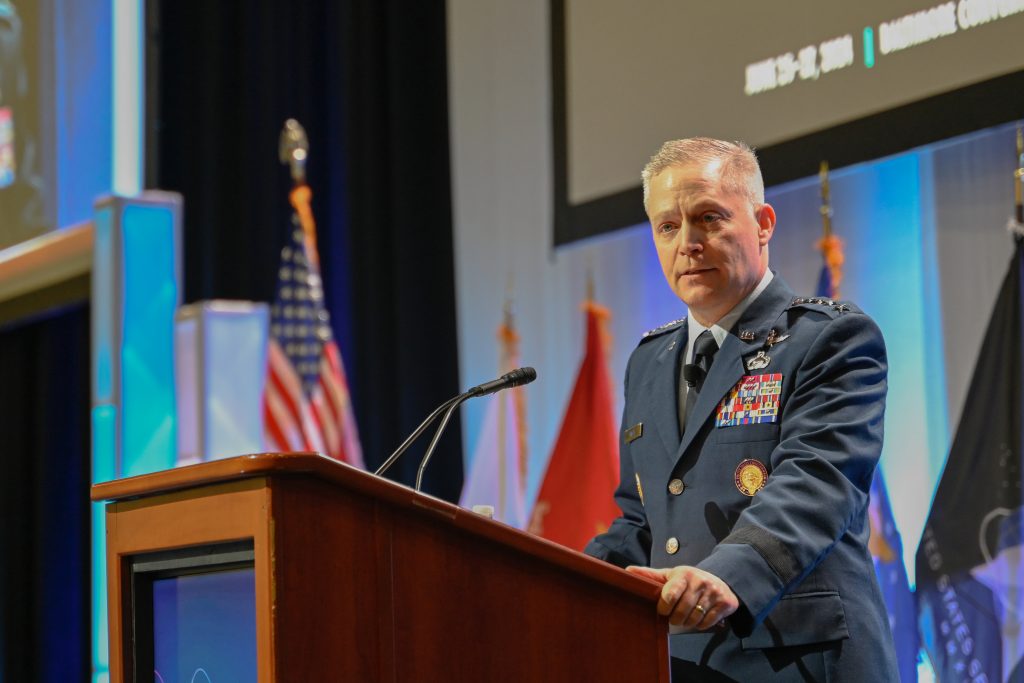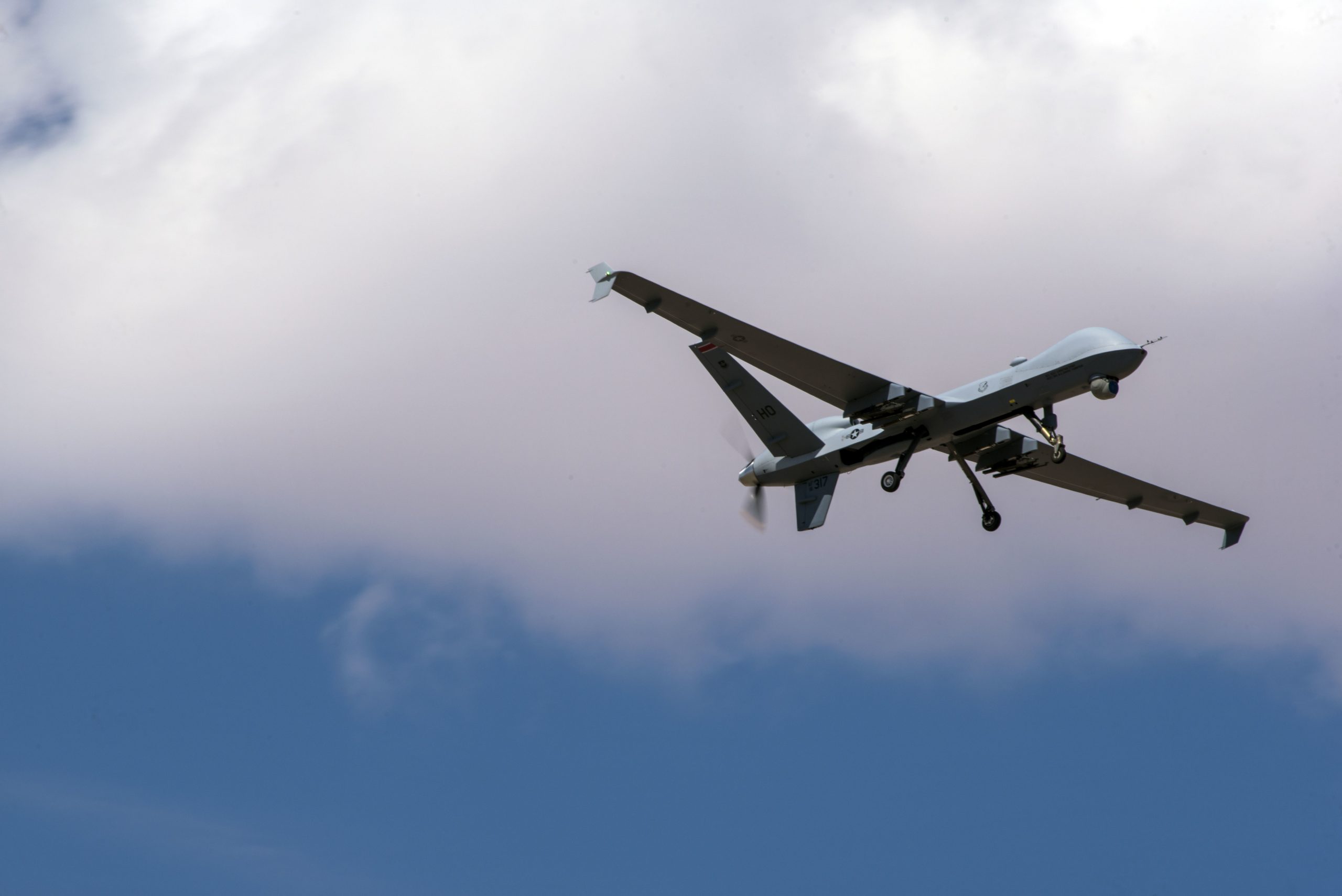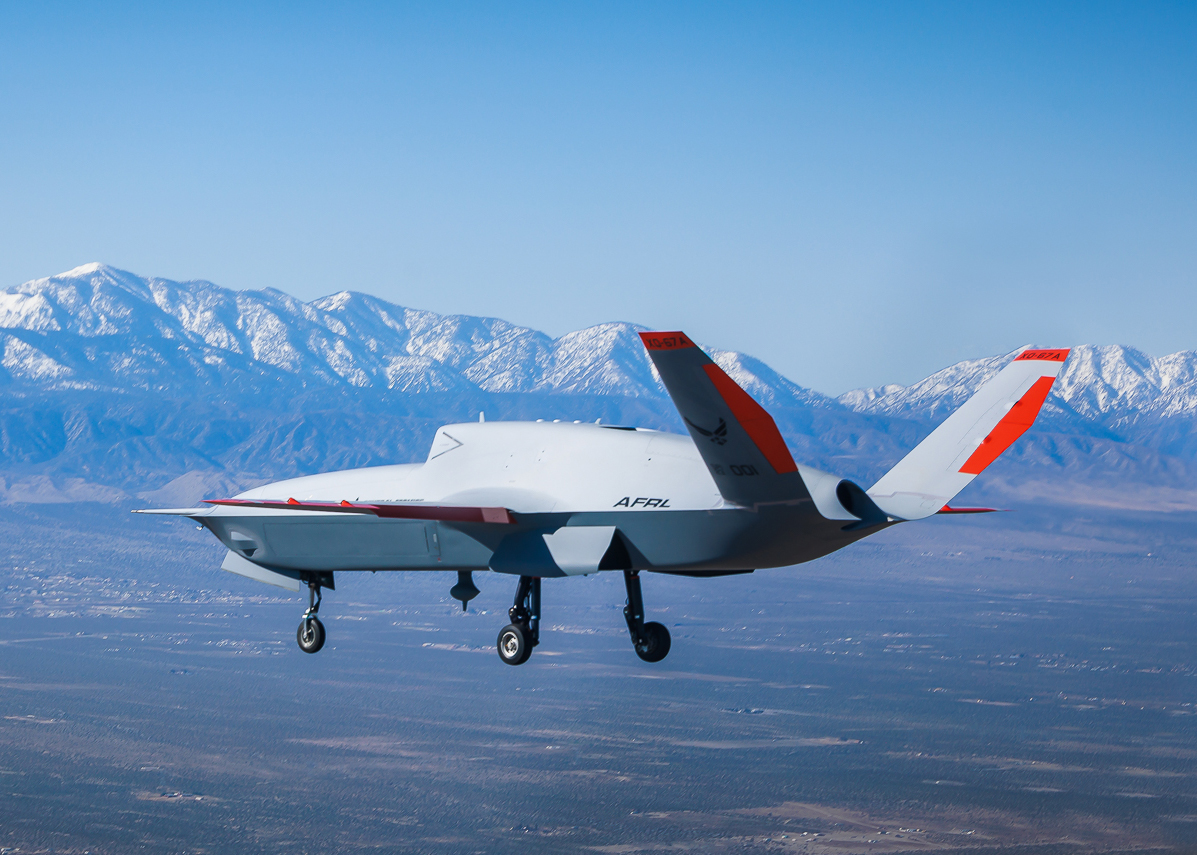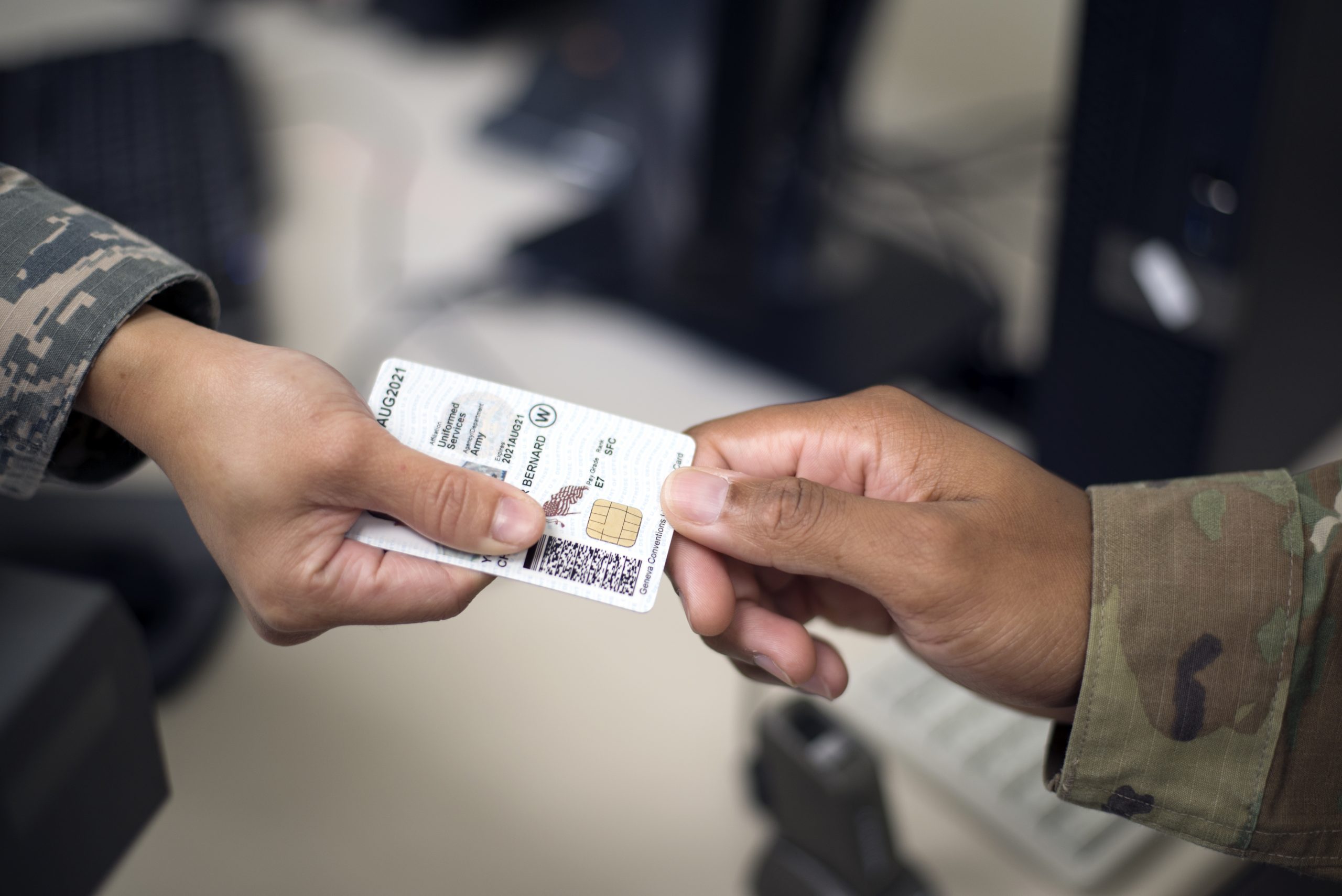The first panel in history to sit for the court-martial of an Air Force general entered deliberations June 28. Eight general officers will now consider the fate of the defendant, Maj. Gen. Phillip Stewart. The former head of the 19th Air Force, which is responsible for pilot training, faces charges of sexual assault, conduct unbecoming an officer, and controlling an aircraft within 12 hours of consuming alcohol.
A spokesperson for Air Education and Training Command said the jury began deliberations at about 1:05 p.m. Central Time at the courtroom at Joint Base San Antonio-Fort Sam Houston, Texas, following closing arguments from government prosecutors and the defense counsel. Six of the eight members of the jury, called a panel in a military court-martial, must vote that Stewart is guilty in order for him to be convicted.
The maximum punishment for sexual assault, a charge for which Stewart faces two specifications, is forfeiture of all pay and allowances and confinement for 30 years, with a mandatory minimum of dismissal or dishonorable discharge.
“We won’t speculate on how much time deliberations will take,” Marilyn Holliday, chief of operations for AETC public affairs, said in a statement. “The next step following the announcement of the verdicts is the determination of punishment, if any guilty verdicts are determined.”
Earlier this week, on June 24, Stewart pleaded guilty to one count of dereliction of duty under Article 92 of the Uniform Code of Military Justice for pursuing an unprofessional relationship. He also pleaded guilty to one count of violating UCMJ Article 134, for having an extramarital affair.
Stewart has pleaded not guilty to three other charges: two counts of violating Article 120, which forbids sexual assault; one count of Article 133, conduct unbecoming an officer for allegedly inviting a subordinate to spend the night with him; and a second count of Article 92, for allegedly controlling an aircraft within 12 hours after consuming alcohol.
The trial began June 17 with administrative proceedings followed by nearly a week of jury selection where more than 13 general officers—all of whom had to outrank Stewart or have pinned on a second star before him—traveled to the courtroom at San Antonio. Selection ended with eight members on June 22, followed by presentation of evidence and witness testimony starting June 24, including testimony from the alleged sexual assault victim. Stewart declined to testify, according to the San Antonio Express-News.
The only other Air Force general to have been court-martialed, Maj. Gen. William Cooley, was convicted of abusive sexual contact in 2022 by military judge alone. Stewart was relieved as the head of the 19th Air Force, by Lt. Gen. Brian Robinson, the head of Air Education and Training Command (AETC), on May 9, 2023.
Stewart’s charges include six specifications:
- Two specifications of violating Article 92 of the Uniform Code of Military Justice, failing to obey a lawful order or regulation, first for allegedly failing “to refrain from pursuing an unprofessional relationship” and second for allegedly controlling an aircraft within 12 hours after consuming alcohol. The first specification allegedly dates to March 6 and May 9, while the second allegedly dates to on or about April 14 at or near Altus Air Force Base, Okla.
- Two specifications of violating Article 120 of the UCMJ, which covers rape and sexual assault, for alleged nonconsensual sexual contact, dated on or about April 13 and 14 at Altus.
- One specification of violating Article 133 of the UCMJ, conduct unbecoming an officer, at or near Denver, Colo., on or about March 6 and March 8, where it alleges that Stewart, “while on official travel, wrongfully invite [redacted] to spend the night alone with him in his private hotel room[.]”
- And one specification of violating UCMJ Article 134, which refers to “all disorders and neglects to the prejudice of good order and discipline in the armed forces, of a nature to bring discredit upon the armed forces,” for allegedly engaging “in extramarital conduct” on or about April 13 and 14 at or near Altus.
